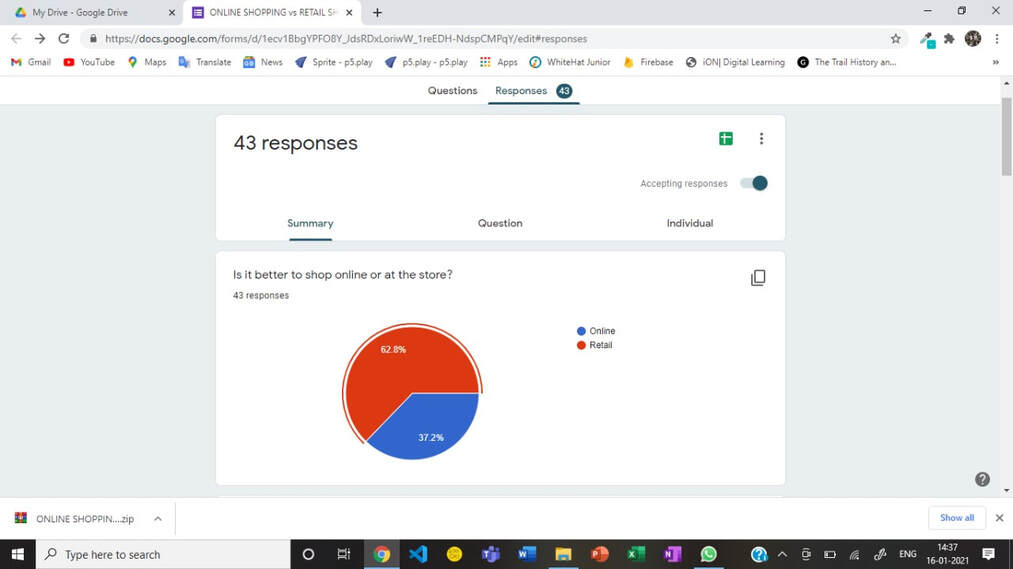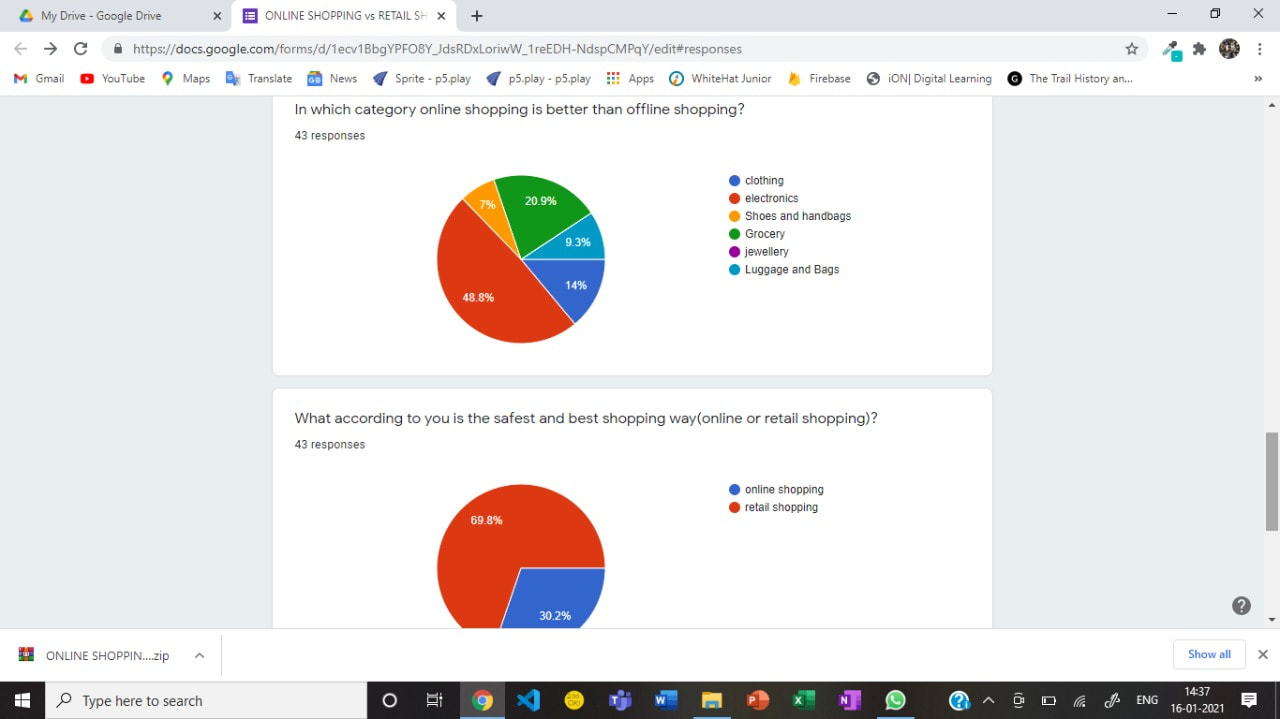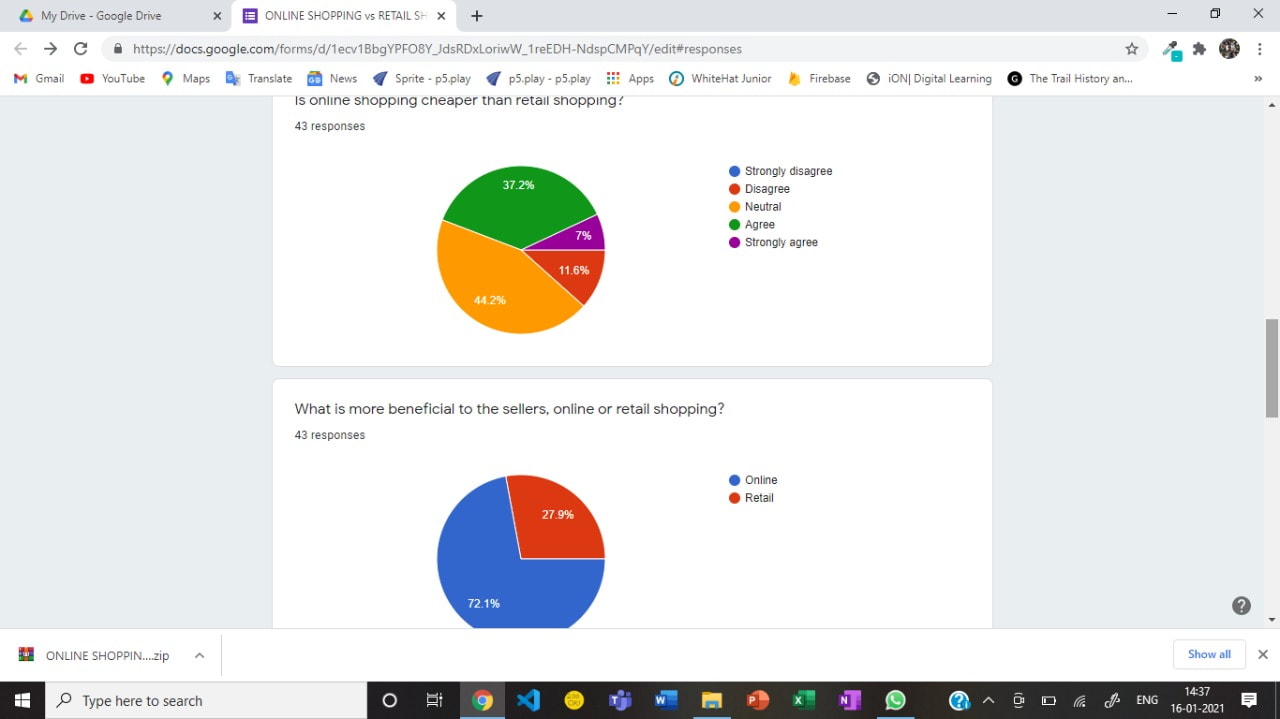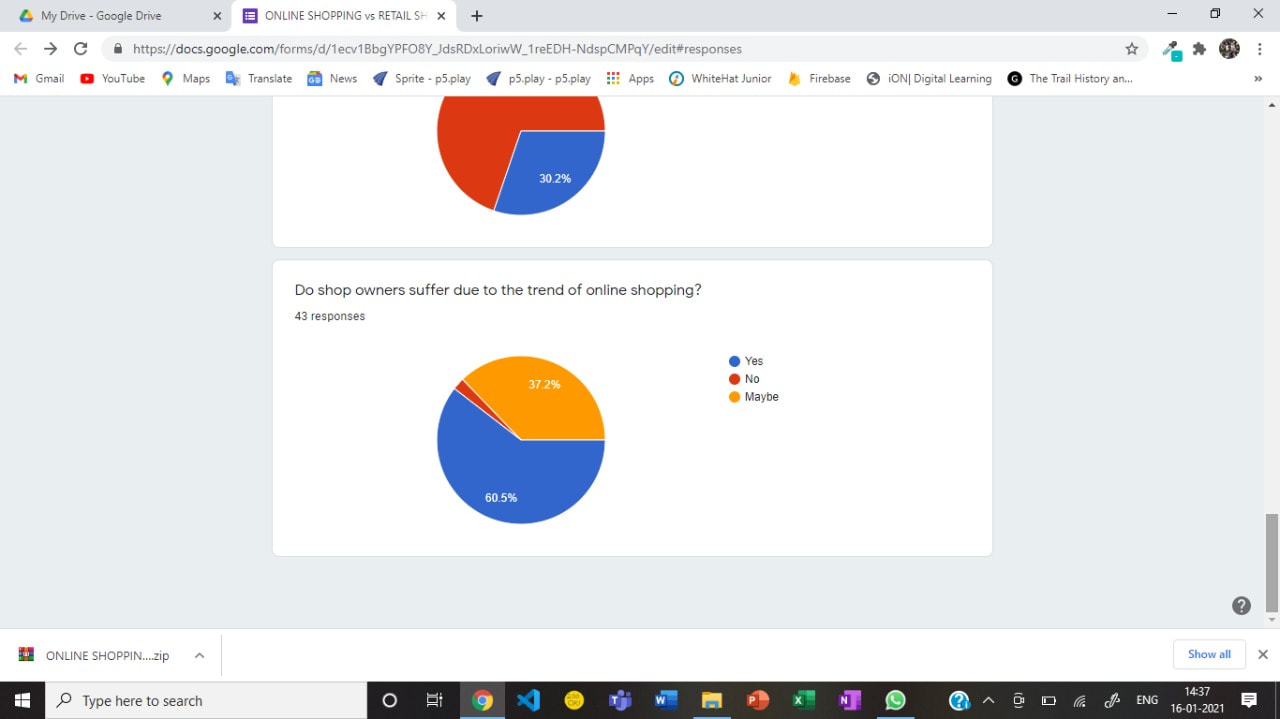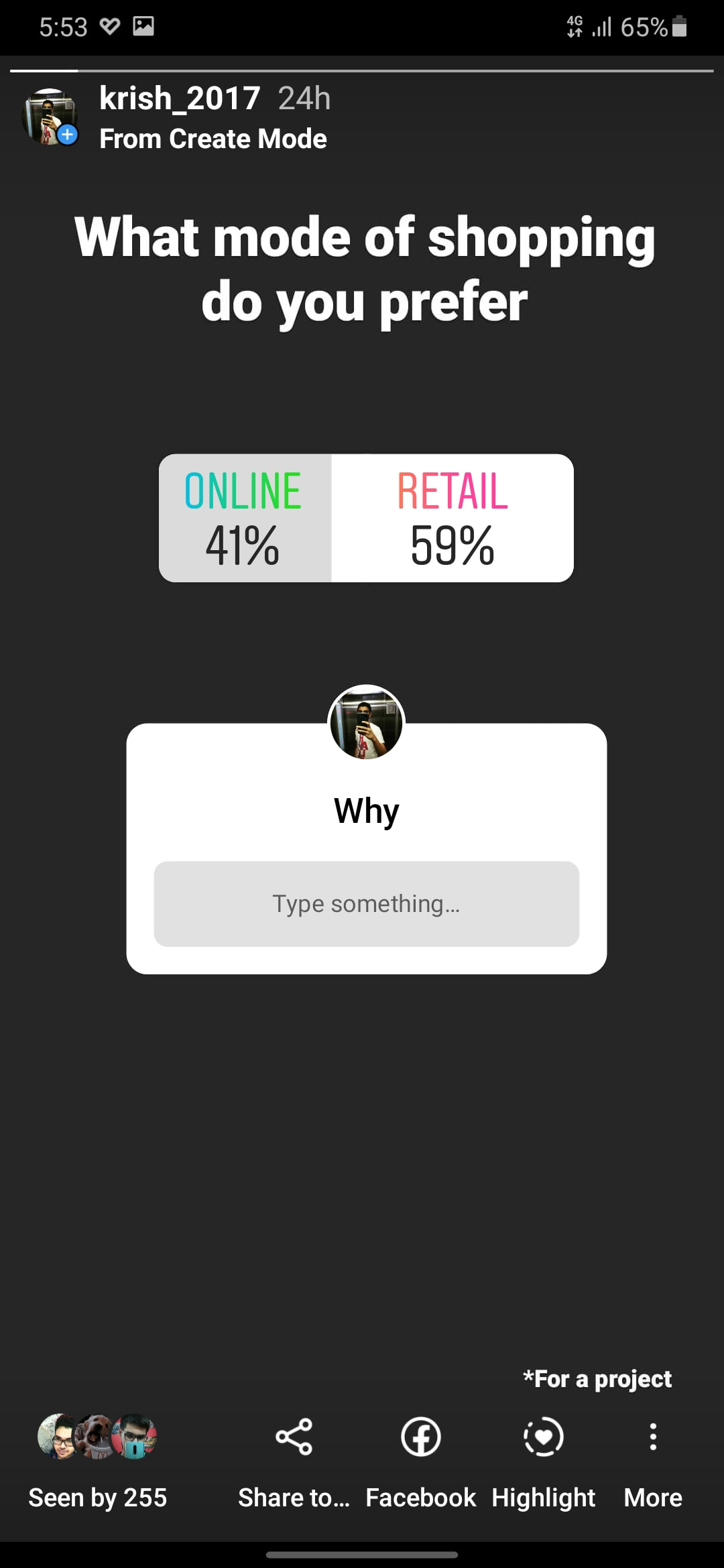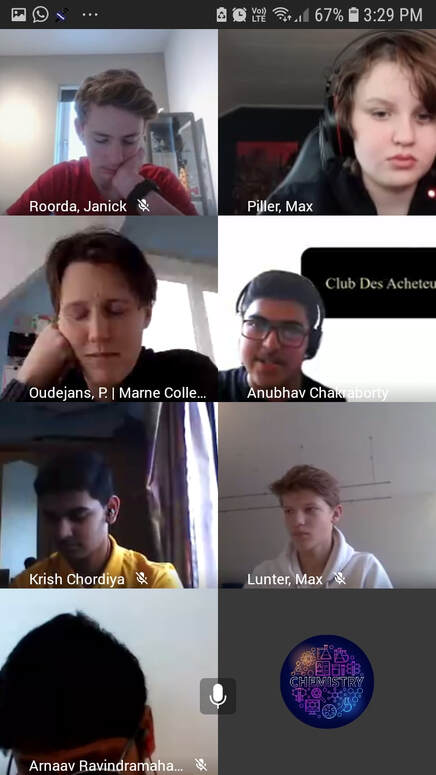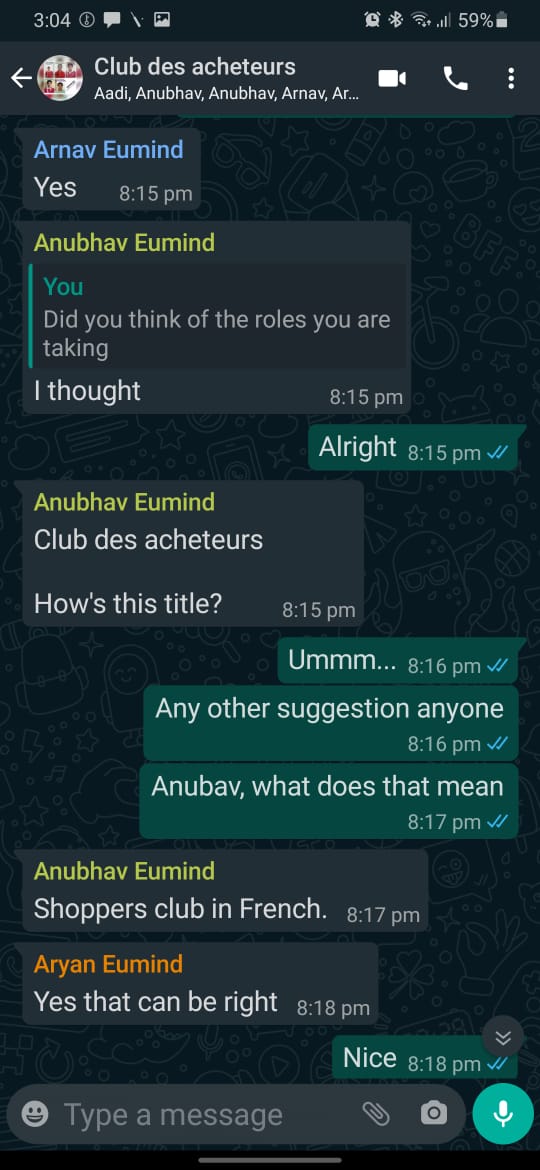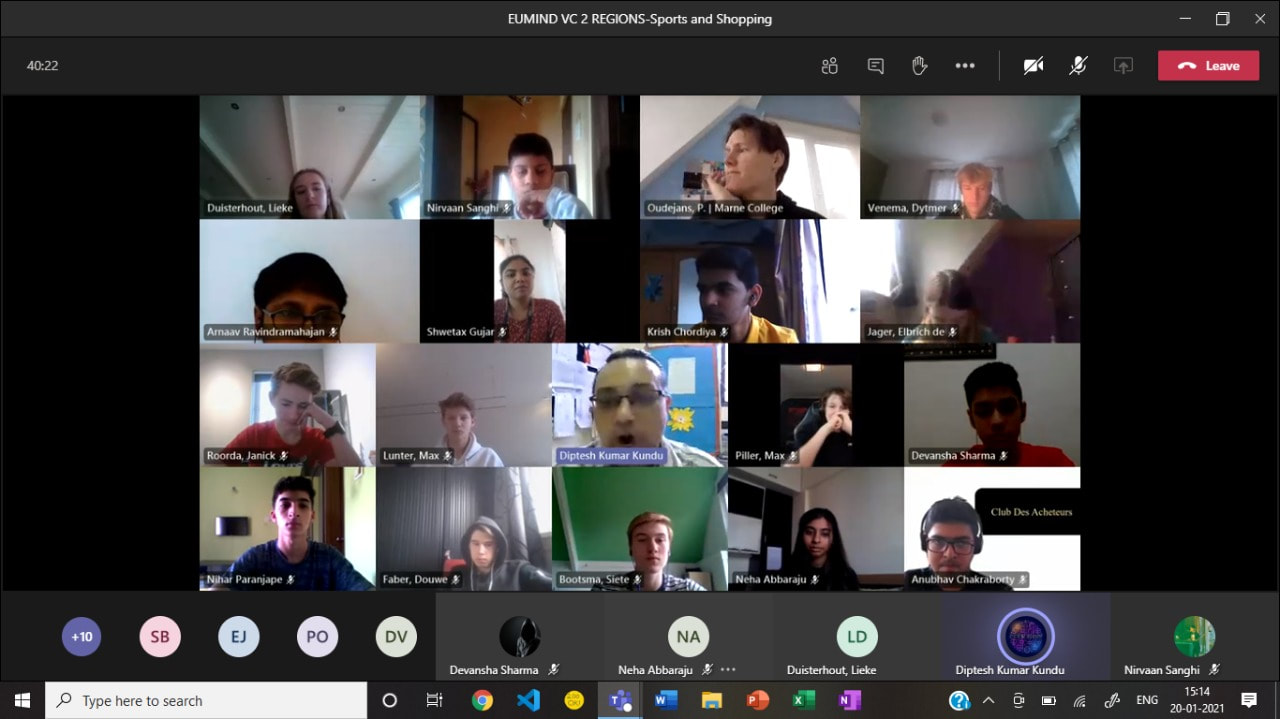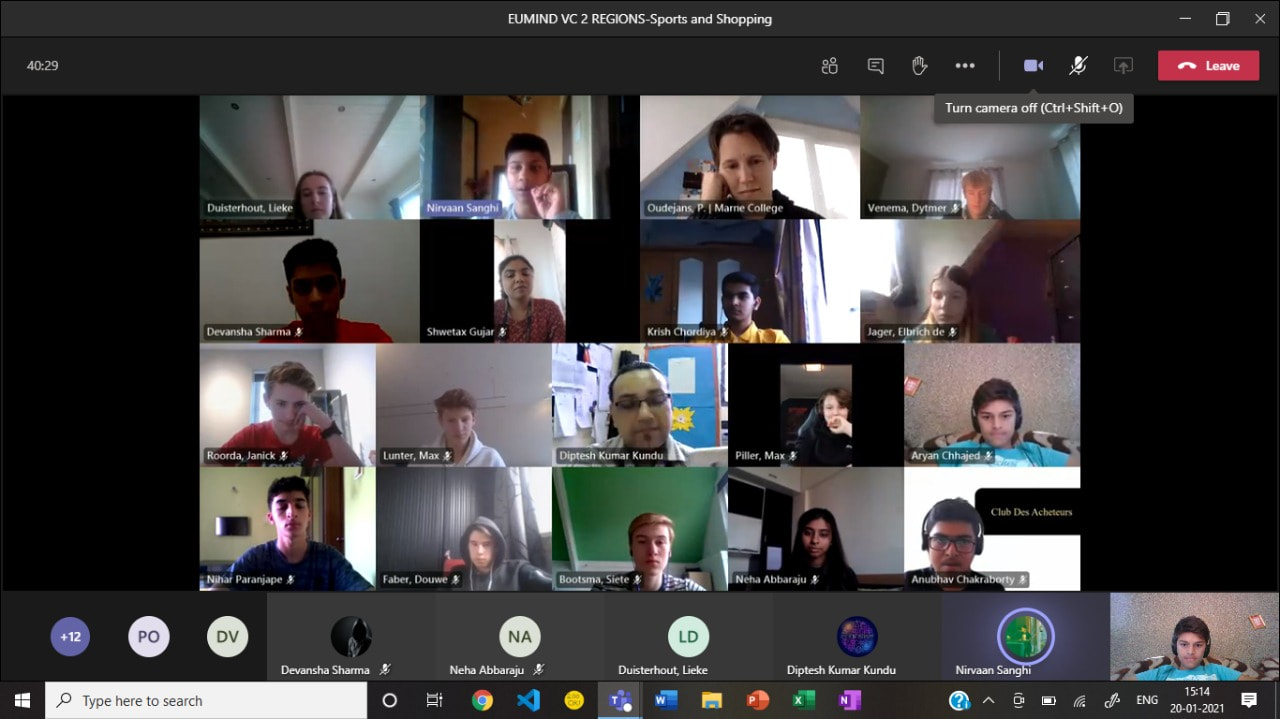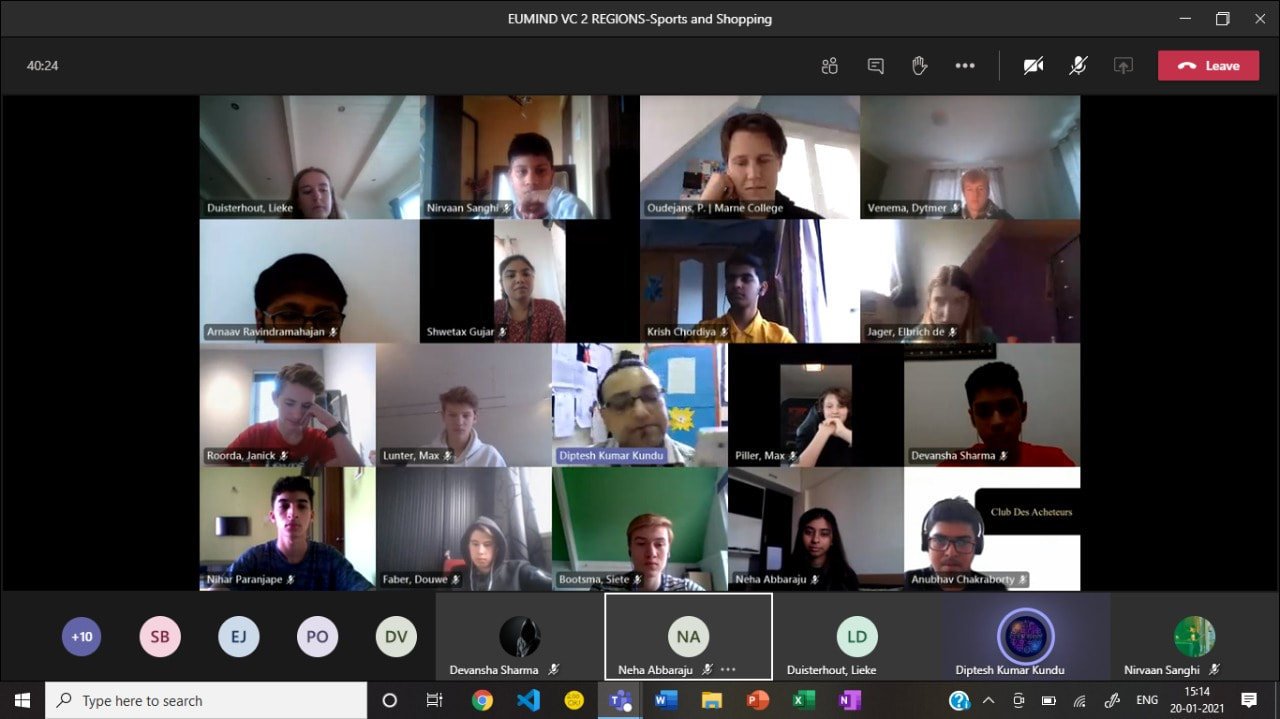School
Dorabjee Paradise Off. Corinthian Club Road, Mohammedwadi, NIBM Ext Rd, Hadapsar, Pune, Maharashtra-411060
Team members
Too many people spend money they haven't earned, to buy things they don't want, to impress people they don't like.
WILL ROGERS
Padlet Links
Krish Chordiya (Leader)
Padlet 1- padlet.com/chordiyakrish/f27yq8asu7a9ww6c
Padlet 2- padlet.com/chordiyakrish/nrtsqdatf80rwct
Anubhav Chakraborthy(Editor)
Padlet 1- padlet.com/chkanubhav09/pkjh69fqxhcfzqii
Padlet 2- padlet.com/chkanubhav09/mk7w9m2kcpn8mtk5
Aryan Chajjed(Interviewer)
Padlet 1- padlet.com/aryanchhajed23/sf6sgc7zbcunvq5s
Padlet 2- padlet.com/aryanchhajed23/60jljus4w1160zyh
Aadi Gaware (Article Writer)
Padlet 1- padlet.com/aadigaware12/ijaqea5rbckia1up
Padlet 2- padlet.com/aadigaware12/pg91mm23gw5l10s9
Arnav Mahajaan(photography)
Padlet 1- padlet.com/mahajanarnaav/u4k41jn71edkzwt1
Padlet 2- padlet.com/mahajanarnaav/xoiht53zlcc59ho7
Padlet 1- padlet.com/chordiyakrish/f27yq8asu7a9ww6c
Padlet 2- padlet.com/chordiyakrish/nrtsqdatf80rwct
Anubhav Chakraborthy(Editor)
Padlet 1- padlet.com/chkanubhav09/pkjh69fqxhcfzqii
Padlet 2- padlet.com/chkanubhav09/mk7w9m2kcpn8mtk5
Aryan Chajjed(Interviewer)
Padlet 1- padlet.com/aryanchhajed23/sf6sgc7zbcunvq5s
Padlet 2- padlet.com/aryanchhajed23/60jljus4w1160zyh
Aadi Gaware (Article Writer)
Padlet 1- padlet.com/aadigaware12/ijaqea5rbckia1up
Padlet 2- padlet.com/aadigaware12/pg91mm23gw5l10s9
Arnav Mahajaan(photography)
Padlet 1- padlet.com/mahajanarnaav/u4k41jn71edkzwt1
Padlet 2- padlet.com/mahajanarnaav/xoiht53zlcc59ho7
Articles and Videos
| the_interview_of_shweta_jain__1_.docx | |
| File Size: | 16 kb |
| File Type: | docx |
| interview_with_samuel_raj.docx | |
| File Size: | 14 kb |
| File Type: | docx |
| interview_with_amit_palrecha_article_3.docx | |
| File Size: | 13 kb |
| File Type: | docx |
| comparison.docx | |
| File Size: | 12 kb |
| File Type: | docx |
Shopping
If shopping doesn't make you happy, then you're in the wrong shop.
ANONYMOUS
Shopping is an activity in which a customer browses the available goods or services presented by one or more retailers with the potential intent to purchase a suitable selection of them. A typology of shopper types has been developed by scholars which identifies one group of shoppers as recreational shoppers,[1] that is, those who enjoy shopping and view it as a leisure activity.[2]
Online shopping has become a major disruptor in the retail industry[3] as consumers can now search for product information and place product orders across different regions. Online retailers deliver their products directly to the consumers' home, offices or wherever they want. The B2C (business to consumer) process has made it easy for consumers to select any product online from a retailer's website and to have it delivered relatively quickly. Using online shopping methods, consumers do not need to consume energy by physically visiting physical stores. This way they save time and the cost of travelling. A retailer or a shop is a business that presents a selection of goods and offers to trade or sell them to customers for money or other goods.
Shoppers' shopping experiences may vary. They are based on a variety of factors including how the customer is treated, convenience, the type of goods being purchased, and mood.[4]
Shopping for pleasureThe modern phenomenon of shopping for pleasure is closely linked to the emergence of a middle class in the 17th and 18th-century Europe. As standards of living improved in the 17th century, consumers from a broad range of social backgrounds began to purchase goods that were in excess of basic necessities. An emergent middle class or bourgeosie stimulated demand for luxury goods and began to purchase a wider range of luxury goods and imported goods, including: Indian cotton and calico; silk, tea and porcelain from China, spices from India and South-East Asia and tobacco, sugar, rum and coffee from the New World.[18] The act of shopping came to be seen as a pleasurable pass-time or form of entertainment.[2]
In the second half of the 19th-century, shops transitioned from 'single-function' shops selling one type of good, to the department store where a large variety of goods were sold. As economic growth, fueled by the Industrial Revolution at the turn of the 19th-century, steadily expanded, the affluent bourgeois middle-class grew in size and wealth. This urbanized social group was the catalyst for the emergence of the retail revolution of the period.
The term, "department store," originated in America.
Shopping venues
Shopping hubs Traditionally, shopping hubs were called bazaars or marketplaces; an assortment of stalls lining streets selling a large variety of goods.[33]
The modern shopping centre is now different from its antecedents, the stores are commonly in individual buildings or compressed into one large structure (usually called Mall in the USA).
Stores Stores are divided into multiple categories of stores which sell a selected set of goods or services. Usually they are tiered by target demographics based on the disposable income of the shopper. They can be tiered from cheap to pricey.
Home shopping Home mail delivery systems and modern technology (such as television, telephones, and the Internet), in combination with electronic commerce, allow consumers to shop from home.
Neighborhood shopping Neighbourhood shopping areas and retailers give value to a community by providing various social and community services (like a library), and a social place to meet. Neighbourhood retailing differs from other types of retailers such as destination retailers because of the difference in offered products and services, location and popularity.[38]
Party shopping The party plan is a method of marketing products by hosting a social event, using the event to display and demonstrate the product or products to those gathered, and then to take orders for the products before the gathering ends.
"Window shopping"
"Window shopping" is a term referring to the browsing of goods by a consumer with or without the intent to purchase. Window shopping is often practised by a particular segment, known as the recreation-conscious or hedonistic shopper. Recreational shopping is characterised by the consumer's engagement in the purchase process, and recreational shoppers are those consumers who see the act of shopping as a form of enjoyment.[47] Other consumers use window shopping as part of their planning activity for a later purchase.
Advantages of physical stores
Physical stores continue to excel at several points that the virtual stores have not yet reached.
Let’s see what they are.
1. Customers want to see the product
There are still people who need to touch, see and feel the product before buying it .
The online businesses have set the wheels in motion in this regard and are increasingly offering the possibility of a completely free return if the product does not satisfy.
2. The difficulty selling certain products online
There are products that for the price or special nature that seem impossible to sell online. A typical example are cars, although as you commented on one occasion, the online car dealerships are a reality that is becoming closer.
3. Customer loyalty
It is true that to serve customers in person promotes loyalty, but this isn’t a definitive argument in favor of local shops.
Online stores have their own ways to get customer loyalty. If your products and services are competitive, you will earn their trust
Online vs Retail Shopping
Online Stores are Much Cheaper to Open
In general, opening a business as an online store is much cheaper than a retail storefront. Unlike a retail storefront, there is no rent to pay or other utility bills directly related to the store, except for web hosting and technical support. You do not have to decorate the inside of the store, purchase inside and outside signage or display units. Since you can manage the work yourself, you do not have to hire additional employees.
With an online store, your costs are directly related to your website, shipping and accepting online payments. You must pay for your desired domain name and may pay someone develop your website and e-commerce platform, which can be expensive, but is less expensive than opening a retail storefront.
Customer Prefer to Touch the Inventory
For high-value items such as designer clothing, antiques, jewelry, furniture and cars, a retail storefront may appeal more to customers and generate a higher profit margin on individual items. Some customers are looking for the experience of shopping, and prefer to see, touch and test items before they buy.
In addition to the price of items that you can sell, you must consider the number of items you wish to sell. A retail storefront will perform better for a business that sells a select amount of products, while an online store may work better for a business that carries an extensive selection.
Consider the Competition
Anyone who wants to open a business should examine the competition before jumping into the process. With an online business, the amount of instant competition is much greater than with a retail storefront. When you want to open a retail storefront, you can easily survey an area and determine what other stores are selling the products you want to offer or choose to open in a location where those stores do no exist.
Online, there are usually multiple businesses selling the product you offer and many of them are already established, making it difficult for a new start-up to break in and find success. If what you are offering is not unique, then a retail storefront will be more successful at trying to earn new customers than trying to break into an already saturated online market.
Requires Different Marketing Approaches
Building a customer base is one of the most-essential components of starting a successful retail business, online or offline. With a retail store, the potential customer base is limited to the surrounding area. Online, the customer base is vast. Once you open up a retail store, your options for attracting new customers are limited. You are confined to the retail space that you chose and changing logos, signs, shelving and the overall marketing strategy can be expensive.
When you work online, changing signs and logos takes mere minutes and you can quickly and easily change the products that you sell and the way you present them on your website.
ANONYMOUS
Shopping is an activity in which a customer browses the available goods or services presented by one or more retailers with the potential intent to purchase a suitable selection of them. A typology of shopper types has been developed by scholars which identifies one group of shoppers as recreational shoppers,[1] that is, those who enjoy shopping and view it as a leisure activity.[2]
Online shopping has become a major disruptor in the retail industry[3] as consumers can now search for product information and place product orders across different regions. Online retailers deliver their products directly to the consumers' home, offices or wherever they want. The B2C (business to consumer) process has made it easy for consumers to select any product online from a retailer's website and to have it delivered relatively quickly. Using online shopping methods, consumers do not need to consume energy by physically visiting physical stores. This way they save time and the cost of travelling. A retailer or a shop is a business that presents a selection of goods and offers to trade or sell them to customers for money or other goods.
Shoppers' shopping experiences may vary. They are based on a variety of factors including how the customer is treated, convenience, the type of goods being purchased, and mood.[4]
Shopping for pleasureThe modern phenomenon of shopping for pleasure is closely linked to the emergence of a middle class in the 17th and 18th-century Europe. As standards of living improved in the 17th century, consumers from a broad range of social backgrounds began to purchase goods that were in excess of basic necessities. An emergent middle class or bourgeosie stimulated demand for luxury goods and began to purchase a wider range of luxury goods and imported goods, including: Indian cotton and calico; silk, tea and porcelain from China, spices from India and South-East Asia and tobacco, sugar, rum and coffee from the New World.[18] The act of shopping came to be seen as a pleasurable pass-time or form of entertainment.[2]
In the second half of the 19th-century, shops transitioned from 'single-function' shops selling one type of good, to the department store where a large variety of goods were sold. As economic growth, fueled by the Industrial Revolution at the turn of the 19th-century, steadily expanded, the affluent bourgeois middle-class grew in size and wealth. This urbanized social group was the catalyst for the emergence of the retail revolution of the period.
The term, "department store," originated in America.
Shopping venues
Shopping hubs Traditionally, shopping hubs were called bazaars or marketplaces; an assortment of stalls lining streets selling a large variety of goods.[33]
The modern shopping centre is now different from its antecedents, the stores are commonly in individual buildings or compressed into one large structure (usually called Mall in the USA).
Stores Stores are divided into multiple categories of stores which sell a selected set of goods or services. Usually they are tiered by target demographics based on the disposable income of the shopper. They can be tiered from cheap to pricey.
Home shopping Home mail delivery systems and modern technology (such as television, telephones, and the Internet), in combination with electronic commerce, allow consumers to shop from home.
Neighborhood shopping Neighbourhood shopping areas and retailers give value to a community by providing various social and community services (like a library), and a social place to meet. Neighbourhood retailing differs from other types of retailers such as destination retailers because of the difference in offered products and services, location and popularity.[38]
Party shopping The party plan is a method of marketing products by hosting a social event, using the event to display and demonstrate the product or products to those gathered, and then to take orders for the products before the gathering ends.
"Window shopping"
"Window shopping" is a term referring to the browsing of goods by a consumer with or without the intent to purchase. Window shopping is often practised by a particular segment, known as the recreation-conscious or hedonistic shopper. Recreational shopping is characterised by the consumer's engagement in the purchase process, and recreational shoppers are those consumers who see the act of shopping as a form of enjoyment.[47] Other consumers use window shopping as part of their planning activity for a later purchase.
Advantages of physical stores
Physical stores continue to excel at several points that the virtual stores have not yet reached.
Let’s see what they are.
1. Customers want to see the product
There are still people who need to touch, see and feel the product before buying it .
The online businesses have set the wheels in motion in this regard and are increasingly offering the possibility of a completely free return if the product does not satisfy.
2. The difficulty selling certain products online
There are products that for the price or special nature that seem impossible to sell online. A typical example are cars, although as you commented on one occasion, the online car dealerships are a reality that is becoming closer.
3. Customer loyalty
It is true that to serve customers in person promotes loyalty, but this isn’t a definitive argument in favor of local shops.
Online stores have their own ways to get customer loyalty. If your products and services are competitive, you will earn their trust
Online vs Retail Shopping
Online Stores are Much Cheaper to Open
In general, opening a business as an online store is much cheaper than a retail storefront. Unlike a retail storefront, there is no rent to pay or other utility bills directly related to the store, except for web hosting and technical support. You do not have to decorate the inside of the store, purchase inside and outside signage or display units. Since you can manage the work yourself, you do not have to hire additional employees.
With an online store, your costs are directly related to your website, shipping and accepting online payments. You must pay for your desired domain name and may pay someone develop your website and e-commerce platform, which can be expensive, but is less expensive than opening a retail storefront.
Customer Prefer to Touch the Inventory
For high-value items such as designer clothing, antiques, jewelry, furniture and cars, a retail storefront may appeal more to customers and generate a higher profit margin on individual items. Some customers are looking for the experience of shopping, and prefer to see, touch and test items before they buy.
In addition to the price of items that you can sell, you must consider the number of items you wish to sell. A retail storefront will perform better for a business that sells a select amount of products, while an online store may work better for a business that carries an extensive selection.
Consider the Competition
Anyone who wants to open a business should examine the competition before jumping into the process. With an online business, the amount of instant competition is much greater than with a retail storefront. When you want to open a retail storefront, you can easily survey an area and determine what other stores are selling the products you want to offer or choose to open in a location where those stores do no exist.
Online, there are usually multiple businesses selling the product you offer and many of them are already established, making it difficult for a new start-up to break in and find success. If what you are offering is not unique, then a retail storefront will be more successful at trying to earn new customers than trying to break into an already saturated online market.
Requires Different Marketing Approaches
Building a customer base is one of the most-essential components of starting a successful retail business, online or offline. With a retail store, the potential customer base is limited to the surrounding area. Online, the customer base is vast. Once you open up a retail store, your options for attracting new customers are limited. You are confined to the retail space that you chose and changing logos, signs, shelving and the overall marketing strategy can be expensive.
When you work online, changing signs and logos takes mere minutes and you can quickly and easily change the products that you sell and the way you present them on your website.
How can Retailers be more competitive
People rise when they are told they can’t do something.
So many retailers love to complain that online retailers are killing them.
And yes online is affecting all of us, but you can minimize online shopping from eating your lunch if you are proactive and up for the fight.
No one is attracted to a brick-and-mortar retailer's pity-party and shame-based fliers scotch-taped to the door to shop with us or we’ll be gone.
And there are a lot of people saying retail can’t survive, but I’ve found…
Do a better job with those in your store. And I don't mean your products or services. The soft skills of customer service are not in employees’ toolkit these days. Your employees may think they are doing a great job, but from the shopper’s perspective they aren’t. That’s why you have to know your customer journey, what you want shoppers to feel when they first walk in, and what associates should choose to say to them after they buy. You must have a relentless focus to be curious about, to understand, and yes…to get your customers to purchase if you want to keep them from pulling out their phones. Checkout retail sales training that thousands are using right now in their stores to increase conversions – SalesRX.com
Have more employees on the floor. One of the biggest reasons loyal customers jump on their phones is to find information. The fewer employees you have, the more shoppers will grow impatient. Don’t give them a reason to go on their phones! And if they do, have your employees well trained and able to poke holes in online retailers’ claims about the same product. Make sure they’re able to compare and contrast offers from your online competition with models the shopper can take home right now.
Provide services. Yes, events are fun but oftentimes not worth the expense. Think different. Think bigger. Add services that add to shopper convenience but can’t be easily price-shopped online like products. What would shoppers pay for that which makes their lives easier? How about adding styling services in partnership with a local salon? How about offering assembly or moving services? Using Thumbtack or other service providers behind the scenes will allow you to be a true one-stop shop that delivers true customer loyalty.
Have your own online store. I know, many years ago I said you shouldn’t, but my thinking has changed. You do need an online presence so for your customers can purchase your products online. I still believe you can’t compete with Amazon who is responsible for 55% of searches online…they’re basically a search engine connected to a warehouse. But your customers are expecting to buy from those they trust when they want, where they want, and how they want. Start your online store with your top 25 items then expand to your top 100. Make sure to mention your site to everyone. And if you’re open to haggling with those online shoppers, take a look at Pricewaiter.
Connect your website to your POS. The big boxes have done this for awhile. There are many ways savvy entrepreneurs are using new technologies to allow shoppers to buy from them directly, either through drop ship from manufacturers or by offering the ability to pickup in your shop within a few hours. This can be a real timesaver for stressed out shoppers trying to cram all their errands and shopping into one Saturday morning. Again, it’s about convenience.
Find new markets. How many times do you go back to the same customer with the same offers? Say you’re a bike store and you had a successful charity ride last year so you send out the same invitation to join this year. Instead, go to a new charity to expose your business to a new market. And go to your online competitors’ sites and see what organizations they support to see which could be a good fit for you.
Marketing to new customers. Take note, this is a game-changer! What if you could find people online who are just like your customers and market to them? You can do that with social media. Here’s how. Take all of your customer emails – you do have those right? Organize them into a spreadsheet. Create a Custom Audience on Facebook then upload your list to the Facebook Ad Manager. After you have created that custom audience, create another Custom Audience but choose the option Lookalike Audience. These are people Facebook believes are like those who purchased from you. Filter down your custom audience to your local zip codes or towns. Next install the Facebook tracking pixel on your site, create ads that feature your best items and services, and analyze your results. Find more here.
Broadcast in real time. What if your shoppers could see what you just got in in your shop - offline - instead of having to wait for someone else’s website to show them? Resale stores are wising up to the opportunity to beat online retailers by holding merchandise shows using Facebook and other social media live streaming features. A bonus is this gives your millennials a chance to partner in your success and show their personalities. Online marketing doesn't have to be expensive and can help you build foot traffic. Here are five businesses killing it with Facebook live video.
Use more technology in-store. There are a host of new consumer apps that allow shoppers to do more online – why not use them or create your own? For example, a furniture store can look at Modsey which gives 3D renderings of rooms so consumers can make sure that new couch will fit their current room. Delectable is a great source for wine enthusiasts – why not use it on your salesfloor? You can encourage your employees to build profiles so they understand what shoppers are using. But tech doesn’t have to be just apps. We trust technology that tells us the best mattress to buy based on a bodyscanning evaluation in store, or shoes to buy based on a foot scan, or even which Ray-Bans to buy from virtual mirrors. These technologies are becoming more and more affordable and accessible. Look at how to bring these gee-whiz technologies onto your selling floor to cement the deal after you’ve built trust.
Online retailers push you to excel.
Online shoe retailers are really hitting brick and mortar stores. Designer Shoe Warehouse (DSW) is testing allowing customers to rent their shoes as well as giving customers a credit for returning their worn ones.
I wouldn’t have thought those two ideas would fly a few years ago, but DSW is determined not to let online competition from the Zappos of the world eclipse their brand.
In Sum
The only constant in retail is change. Change the way you respond to your competition or die.
If you are up for the challenge to fight the online retailers, you need more employees who can deliver a true branded customer experience working in your store. You need to add more services, have more integration between your online and brick and mortar store and online shop, and hold a winning attitude in the face of it all.
That way you can harness the power of being one of the brick-and-mortar retailers who see the opportunity - people to people.
How to compete with online retail? Focus on the people – who you allow on your floor, how well they are trained in the soft skills, and how engaged they are with your shoppers first.
Then use technology to focus on the customer – both in your store and online to brand your shopper's butt wherever they shop with you by providing an exceptional experience every time.
Do that and you can enjoy the ride instead of complaining about it.
And yes online is affecting all of us, but you can minimize online shopping from eating your lunch if you are proactive and up for the fight.
No one is attracted to a brick-and-mortar retailer's pity-party and shame-based fliers scotch-taped to the door to shop with us or we’ll be gone.
And there are a lot of people saying retail can’t survive, but I’ve found…
Do a better job with those in your store. And I don't mean your products or services. The soft skills of customer service are not in employees’ toolkit these days. Your employees may think they are doing a great job, but from the shopper’s perspective they aren’t. That’s why you have to know your customer journey, what you want shoppers to feel when they first walk in, and what associates should choose to say to them after they buy. You must have a relentless focus to be curious about, to understand, and yes…to get your customers to purchase if you want to keep them from pulling out their phones. Checkout retail sales training that thousands are using right now in their stores to increase conversions – SalesRX.com
Have more employees on the floor. One of the biggest reasons loyal customers jump on their phones is to find information. The fewer employees you have, the more shoppers will grow impatient. Don’t give them a reason to go on their phones! And if they do, have your employees well trained and able to poke holes in online retailers’ claims about the same product. Make sure they’re able to compare and contrast offers from your online competition with models the shopper can take home right now.
Provide services. Yes, events are fun but oftentimes not worth the expense. Think different. Think bigger. Add services that add to shopper convenience but can’t be easily price-shopped online like products. What would shoppers pay for that which makes their lives easier? How about adding styling services in partnership with a local salon? How about offering assembly or moving services? Using Thumbtack or other service providers behind the scenes will allow you to be a true one-stop shop that delivers true customer loyalty.
Have your own online store. I know, many years ago I said you shouldn’t, but my thinking has changed. You do need an online presence so for your customers can purchase your products online. I still believe you can’t compete with Amazon who is responsible for 55% of searches online…they’re basically a search engine connected to a warehouse. But your customers are expecting to buy from those they trust when they want, where they want, and how they want. Start your online store with your top 25 items then expand to your top 100. Make sure to mention your site to everyone. And if you’re open to haggling with those online shoppers, take a look at Pricewaiter.
Connect your website to your POS. The big boxes have done this for awhile. There are many ways savvy entrepreneurs are using new technologies to allow shoppers to buy from them directly, either through drop ship from manufacturers or by offering the ability to pickup in your shop within a few hours. This can be a real timesaver for stressed out shoppers trying to cram all their errands and shopping into one Saturday morning. Again, it’s about convenience.
Find new markets. How many times do you go back to the same customer with the same offers? Say you’re a bike store and you had a successful charity ride last year so you send out the same invitation to join this year. Instead, go to a new charity to expose your business to a new market. And go to your online competitors’ sites and see what organizations they support to see which could be a good fit for you.
Marketing to new customers. Take note, this is a game-changer! What if you could find people online who are just like your customers and market to them? You can do that with social media. Here’s how. Take all of your customer emails – you do have those right? Organize them into a spreadsheet. Create a Custom Audience on Facebook then upload your list to the Facebook Ad Manager. After you have created that custom audience, create another Custom Audience but choose the option Lookalike Audience. These are people Facebook believes are like those who purchased from you. Filter down your custom audience to your local zip codes or towns. Next install the Facebook tracking pixel on your site, create ads that feature your best items and services, and analyze your results. Find more here.
Broadcast in real time. What if your shoppers could see what you just got in in your shop - offline - instead of having to wait for someone else’s website to show them? Resale stores are wising up to the opportunity to beat online retailers by holding merchandise shows using Facebook and other social media live streaming features. A bonus is this gives your millennials a chance to partner in your success and show their personalities. Online marketing doesn't have to be expensive and can help you build foot traffic. Here are five businesses killing it with Facebook live video.
Use more technology in-store. There are a host of new consumer apps that allow shoppers to do more online – why not use them or create your own? For example, a furniture store can look at Modsey which gives 3D renderings of rooms so consumers can make sure that new couch will fit their current room. Delectable is a great source for wine enthusiasts – why not use it on your salesfloor? You can encourage your employees to build profiles so they understand what shoppers are using. But tech doesn’t have to be just apps. We trust technology that tells us the best mattress to buy based on a bodyscanning evaluation in store, or shoes to buy based on a foot scan, or even which Ray-Bans to buy from virtual mirrors. These technologies are becoming more and more affordable and accessible. Look at how to bring these gee-whiz technologies onto your selling floor to cement the deal after you’ve built trust.
Online retailers push you to excel.
Online shoe retailers are really hitting brick and mortar stores. Designer Shoe Warehouse (DSW) is testing allowing customers to rent their shoes as well as giving customers a credit for returning their worn ones.
I wouldn’t have thought those two ideas would fly a few years ago, but DSW is determined not to let online competition from the Zappos of the world eclipse their brand.
In Sum
The only constant in retail is change. Change the way you respond to your competition or die.
If you are up for the challenge to fight the online retailers, you need more employees who can deliver a true branded customer experience working in your store. You need to add more services, have more integration between your online and brick and mortar store and online shop, and hold a winning attitude in the face of it all.
That way you can harness the power of being one of the brick-and-mortar retailers who see the opportunity - people to people.
How to compete with online retail? Focus on the people – who you allow on your floor, how well they are trained in the soft skills, and how engaged they are with your shoppers first.
Then use technology to focus on the customer – both in your store and online to brand your shopper's butt wherever they shop with you by providing an exceptional experience every time.
Do that and you can enjoy the ride instead of complaining about it.
Reflection by our team
Anubhav Chakraborthy(Editor):
At start, the team was not very focused but later, everyone started taking Eumind seriously. We were not so aware about the online platforms like weebly, padlets, etc. But after some time this became the new normal for us and we started conducting online meetings on platforms like google meet, Zoom, etc. Even though we missed physical schooling, we got used to online meetings after a period of time. We had many arguments as everyone had different opinions. We started working and coordinating as a team.
Krish Chordiya(Leader):
In the start, we did not do the work cautiously and was taken as a casual thing but as time passed, Diptesh sir guided us and everyone felt that we need to do our best to make our team better and sorted.
The most important factor was time and work management. If our team managed the time and work more efficiently from the start itself, then we could have done a lot better. We could not meet the team members physically so it was hard to do everything online which was new for us and we were not so aware of it. We still tried our best.
Aryan Chajjed(Interviewer):
Firstly, I did not know what EUMIND was, but after joining I understood that it had many fun activities as well as I could learn many things. I was introduced to many friends. I was made the interviewer of my team and I understood how a team works and can do anything possible. My interviews went well but I was very shy for the first time when I was asking questions to someone but after 1-2 interviews, I was confident and then I could take interviews of many people. So totally, I took 7-8 interviews of people and some of my friends. We also had small video talks so that we could decide the questionnaire or decide the layout of the Weebly website. We had a good bonding within our group so we could complete our work on time. Our methods were only simple. Whenever the work is given just complete and submit it two days or before that. Sot that we could not get late in any of the submission. Our leader also co-ordinated with us to complete the work. I had a great time in EUMIND this year. I would definitely join EUMIND next year if my parents give permission.
At start, the team was not very focused but later, everyone started taking Eumind seriously. We were not so aware about the online platforms like weebly, padlets, etc. But after some time this became the new normal for us and we started conducting online meetings on platforms like google meet, Zoom, etc. Even though we missed physical schooling, we got used to online meetings after a period of time. We had many arguments as everyone had different opinions. We started working and coordinating as a team.
Krish Chordiya(Leader):
In the start, we did not do the work cautiously and was taken as a casual thing but as time passed, Diptesh sir guided us and everyone felt that we need to do our best to make our team better and sorted.
The most important factor was time and work management. If our team managed the time and work more efficiently from the start itself, then we could have done a lot better. We could not meet the team members physically so it was hard to do everything online which was new for us and we were not so aware of it. We still tried our best.
Aryan Chajjed(Interviewer):
Firstly, I did not know what EUMIND was, but after joining I understood that it had many fun activities as well as I could learn many things. I was introduced to many friends. I was made the interviewer of my team and I understood how a team works and can do anything possible. My interviews went well but I was very shy for the first time when I was asking questions to someone but after 1-2 interviews, I was confident and then I could take interviews of many people. So totally, I took 7-8 interviews of people and some of my friends. We also had small video talks so that we could decide the questionnaire or decide the layout of the Weebly website. We had a good bonding within our group so we could complete our work on time. Our methods were only simple. Whenever the work is given just complete and submit it two days or before that. Sot that we could not get late in any of the submission. Our leader also co-ordinated with us to complete the work. I had a great time in EUMIND this year. I would definitely join EUMIND next year if my parents give permission.
Our Online Survey Results
Link to our Online Survey-forms.gle/tdEe9gxMcBZshUUM9
